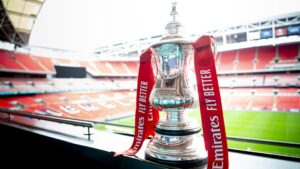Exciting progress has been made on a second edition of The Town’s Game: The Origins of Rugby and Association Football in Southport 1872-1889, which is now almost ready for publication. This edition offers not only a deeper exploration of the early days of sport in Southport but also several important updates to the historical record. It has taken a little longer than I had planned to get around to publishing it due to other commitments, but I’m pleased with what the second edition offers.
The main addition is an Epilogue chapter that briefly covers the progression of rugby in Southport after the closure of Olympic in 1889, as well as revisions to the chapter on Lineage and Formation dates. These clarifications make it easier to understand how the rugby club that exists today formed and evolved after the period covered in the book.
Away from the book, one of the key focuses of my recent work has been on the association football side, specifically researching and verifying player line-ups. This has been an ongoing effort for the best part of 20 years but by plugging gaps in these line-ups and declassifying county cup games from first-class status, I’ve been able to work towards assigning accurate Heritage numbers for all players who have represented the club since its inception in 1888. These Heritage numbers are assigned based on the order in which each player made their debut, and this research will allow us to establish a complete and reliable record of the club’s playing history. (See Record Keeping Principles)
I still have a small handful of games that I still want to get absolute clarity over before the list if actually published in its entirety, but it is safe to safe to say that goalkeeper Lewis Tyldesley can be identified as player number 1 in the club’s history. He was the first named player in the club’s debut competitive fixture, an FA Cup tie against Irwell Springs in 1888. This key milestone serves as a foundation for the broader work of cataloguing every player who has worn the club’s colours since. The irony is that, had the early friendlies counted towards the heritage numbering (they do not) he would still have been number one as he was also the first named player in the inaugural game for the new club on 1st September 1888 against Stanley of Liverpool. Lewis was a bell ringer at Christ Church for over 50 years and is buried in Duke Street Cemetery, not too far from the gentleman who helped to “start it all”, George Pilkington. When I next run a walking sports history at the Cemetery, I will be sure to include Lewis as one of the stops.
DJH
Discover more from Southport Central
Subscribe to get the latest posts sent to your email.

 1 - 3 v FC Halifax Town (H) 11/10/2025
1 - 3 v FC Halifax Town (H) 11/10/2025 




More Stories
End of Summer Update
June 2025 Update
Call for Contributors: Help Celebrate Southport’s Cricket, Rugby and Association Football History